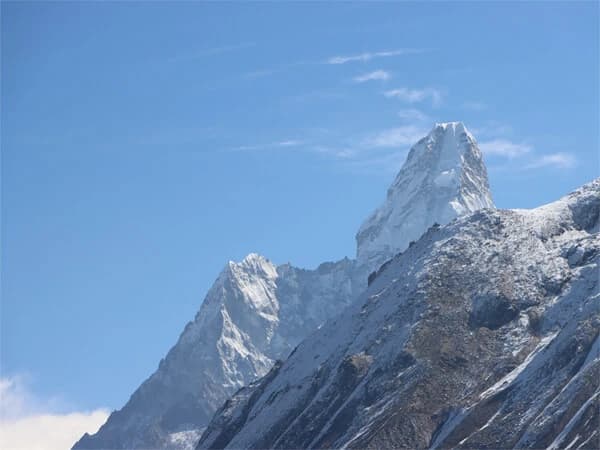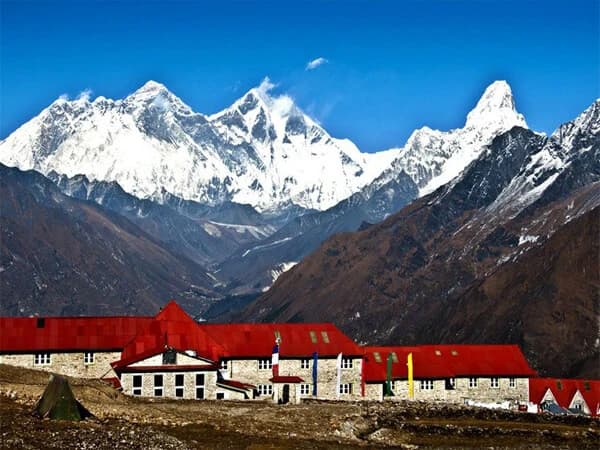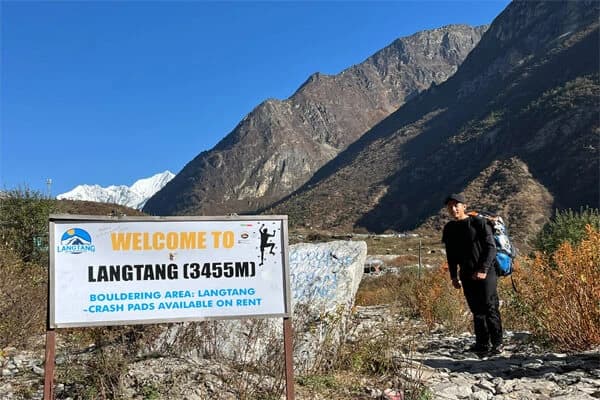The best season for Everest View Trek indicates how safe and pleasurable your trip will be. The weather and visibility have a significant impact on the Everest View Trek ability to provide stunning panoramic views of Mount Everest, Lhotse, Nuptse, and other Himalayan peaks. Selecting the appropriate seasm. on influences trail conditions, lodging availability, and general trekking comfort in addition to guaranteeing unobstructed mountain views.
Trekkers can take advantage of good temperatures, consistent weather, and a lower chance of rain or snowstorms during the best seasons. Because visibility is at its best, photographers and nature enthusiasts can capture the breathtaking scenery. Additionally, the journey is safer when flights to and from Lukla are more likely to run on time, and when the routes are dry and not slippery.
This blog post will examine the Everest View Trek best time, going into the benefits and drawbacks of spring, autumn, winter, and monsoon. Trekkers can better organize their journey and guarantee a safe and unforgettable Himalayan experience by being aware of the seasonal differences.
Everest view trek in Spring Season (March to May) – Ideal season for short Everest Trek
Spring is widely regarded as one of the best months for Everest Trek. The skies are clear, the temperature is normally pleasant, and the landscapes are a riot of color during these months. For both novice and expert trekkers, this time of year offers the ideal combination of pleasant trekking conditions and stunning Himalayan scenery.
Weather and Temperatures
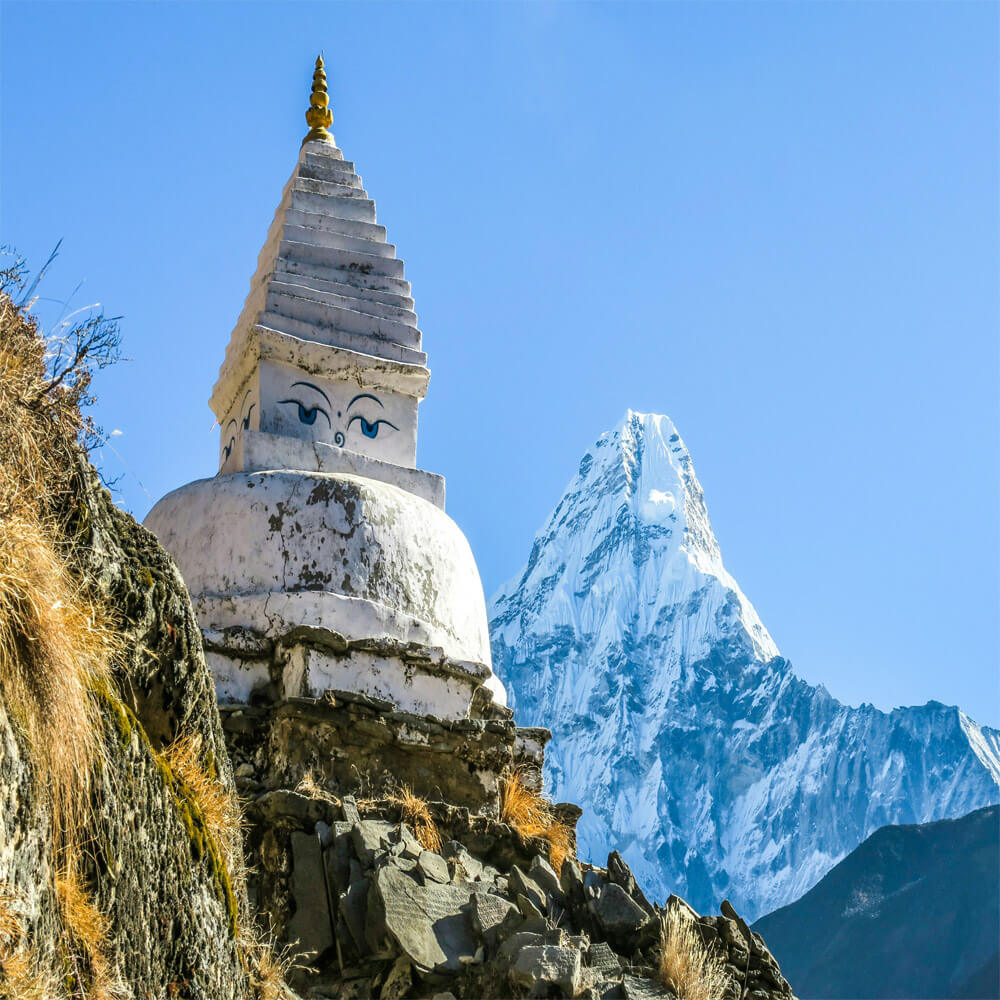
The daytime temperature in Everest Region is mild from March to May, with lower elevations usually seeing temperatures between 10°C and 20°C. Although chilly, nights are tolerable with the right clothing. Although it can grow colder as you travel higher, springtime brings some of the year's clearest skies, allowing trekkers to see peaks like Everest, Lhotse, and Ama Dablam without any obstructions. Compared to the monsoon season, trekking routes are typically safer and less slippery due to the pleasant weather.
Clear Views of Everest and Surrounding Peaks
Spring is the best time of year to enjoy the clear mountain views in Nepal. Photographs are unhindered by the comparatively dry air and the glistening snow-capped summits under clear skies. Adventurers can enjoy some of the most famous Himalayan landscapes when trekking in Nepal during this time of year, free from the dense clouds and rain that might obstruct views during the monsoon season. The trek is very comfortable and beautiful because of the sunshine and moderate temperatures.
Rhododendron Blooming Season in Everest View Trek
The Rhododendron blooming season is one of the most picturesque aspects of spring trekking. Rhododendron forests along the trail's lower stretches exploded in vivid red, pink, and white hues from late March to early May. Trekking becomes much more beautiful as a result of this natural phenomenon, which makes the trip not only daring but also breathtaking. Trekkers may enjoy the breathtaking scenery of snow-capped peaks and the cool mountain air as they walk through these vibrant woodlands.
Advantages and Challenges During the Everest view trek
Clear skies, mild temperatures, and the picturesque beauty of blossoming plants are just a few of the numerous benefits of springtime. In Nepal, services like lodges, guides, and tea shops are fully operating when the trekking season begins. However, reservations should be made well in advance because popular trails, such as the Everest View Trek, can get busy. The benefits of the season greatly exceed any slight drawbacks, making it a top option for both comfort and excitement, even with the high volume of trekkers.
The best time to go trekking in Nepal is in the spring. The weather is great, the mountain views are clear, and the rhododendron blooming season Everest trek is breathtaking. Whether it is your first time trekking or you are returning to the Himalayas, spring offers a once-in-a-lifetime experience full of stunning scenery, cultural interactions, and natural beauty.
Everest view trek in Autumn Season trekking in Nepal (September-November)
Many people agree that autumn is one of the best seasons for Nepal trekking, particularly for those who want to see the Everest region. Views of the Himalayan peaks are breathtaking, the air is crisp, and the skies are typically clear after the monsoon season. Trekkers like this season for both shorter treks like the Everest View Trek and longer treks like theEverest Base Camp Trekbecause it provides the best Everest trek experiences.
Clear Skies and Panoramic Views
The crispness of the skies is one of the main draws of trekking in the autumn. The air is clear and the mountain peaks stand out against the clear blue sky as the monsoon rains remove dust and other pollutants. Whether you are approaching Everest Base Camp or standing at a viewpoint along the Luxury Everest View Trek, this makes for ideal photographic and sightseeing opportunities. Trekkers can enjoy unbroken panoramic views of Everest, Lhotse, Ama Dablam, and other Himalayan giants because to the combination of brilliant sunlight and excellent visibility.
Comfortable Weather in Everest Region
In general, autumn temperatures are milder than those of winter. While the mornings and evenings are cooler but still bearable with layers of clothes, the daytime temperatures are comfortable for walking. This lowers the chance of hypothermia or excessive exhaustion while also making travel safer and more comfortable. It is perfect for both novice and expert trekkers because the snow line is still high enough to allow trails to be accessed without being blocked by deep snow.
Cultural Experience and Festivals
Numerous significant Nepali festivals fall throughout the autumn, adding a cultural element to the trekking experience. In the villages along the trail, trekkers can observe customs, dances, and celebrations. By offering insight into the ways of life of the Sherpa and other ethnic minorities residing in the Everest region, this cultural immersion enhances the trip.
Crowds and Preparation
The Everest Base Camp Trek in particular might have crowded pathways due to the autumn being the best trekking season in Nepal Himalayas. It is necessary to arrange flights and lodging well in advance. The benefits of the season clear skies, comfortable weather for Everest panorama trekking, and exciting cultural experiences far exceed the small annoyances, even with the crowds.
For both short and lengthy treks, autumn is the best time of year for anyone wishing to experience the Himalayas. Excellent visibility, temperate temperatures, and dependable weather all contribute to a satisfying trekking experience. Autumn offers the best circumstances to fully appreciate Nepal's famous landscapes, whether your goal is Hiking to Everest Base Camp or the picturesque vistas of the Everest View.
Everest view trek in Winter Season (December to February)
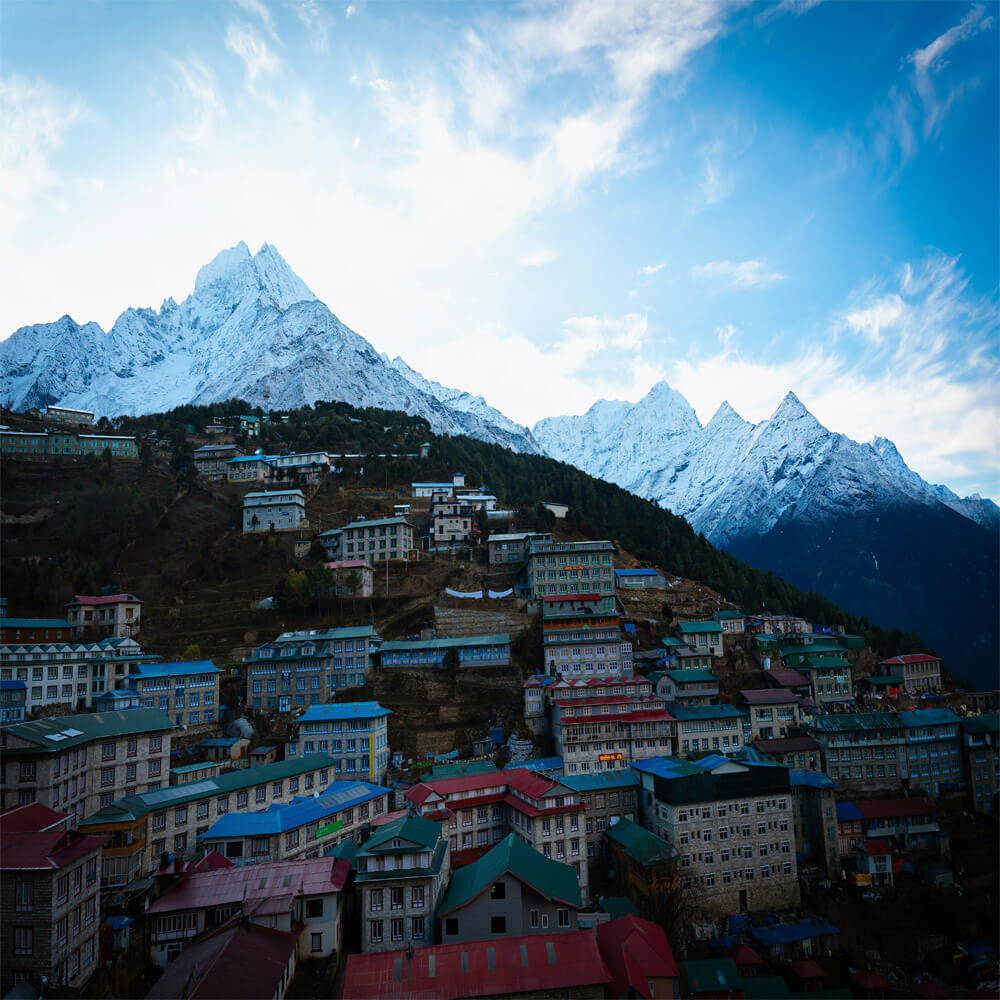
Despite being the off-season for trekking in Nepal, winter provides a distinctive experience for people who value peace, calm routes, and the fresh mountain air. Even while snow and colder weather can make the trek more difficult, there are some unique benefits to this time of year, especially in terms of beauty and visibility.
Winter trekking conditions Everest
The Everest region has severe winter temperatures, particularly at higher elevations. Higher elevations like Tengboche and Kala Patthar may see below-freezing temperatures during the day, while lower communities like Namche Bazaar may see temperatures between 5 and 10°C. At higher elevations, snowfall is frequent, which causes icy or slippery routes. If you have the right trekking boots, layered gear, and warm clothes,trekking in Nepalin the winter can be worthwhile despite these difficulties.
Visibility for Everest Mountain Views
The visibility of the Everest mountains is one of the biggest benefits of winter trekking. With fewer clouds and clearer skies, cold, dry air frequently offers stunning views of the Himalayan peaks, including Everest, Lhotse, Ama Dablam, and others. Photographic circumstances are perfect as the snow-capped mountains gleam against the clear blue sky. The sun frequently shines brilliantly during the day, allowing trekkers to enjoy the picturesque views for an extended period of time, despite the lower temperatures.
Crowds and Solitude
Trekking in Nepal is not as popular during the winter months. Compared to the bustling spring and fall seasons, the trails are far less congested. Trekkers may enjoy the tranquil surroundings and become fully immersed in the Sherpa culture without having to deal with throngs of tourists thanks to this more tranquil experience. Winter can be more difficult if you are thinking of the Everest Three High Passes Trek because of snow accumulation. It offers seasoned trekkers looking for isolation a unique, daring experience.
Trekking Considerations
Trekkers should be aware of ice trails, fewer daylight hours, and a shortage of lodging at higher elevations when trekking in the winter. It is crucial to plan ahead, which includes reserving lodges in advance and bringing the necessary cold clothing. Acclimatization time is still required because altitude is still a significant influence. Winter weather can also impact helicopter services, therefore emergency plans need to be flexible.
Advantages for Adventurous Trekkers
Winter trekking gives unparalleled mountain view clarity, peace, and the opportunity to explore the Himalayas in a more personal environment, despite the cold and certain logistical difficulties. This time of year may be quite beneficial for trekkers looking for both adventure and stunning landscape. Additionally, winter circumstances assist trekkers get ready for future, more challenging Himalayan expeditions.
Trekking in Nepal offers a distinctive viewpoint during the winter months. It is the perfect time of year for anyone looking for a memorable Himalayan adventure and visibility for Everest mountain vistas because of the clear skies, immaculate snow, and peaceful trails. Even for longer treks like the Everest Three High Passes Trek, it is an incredible time to experience the majesty of Everest and the surrounding peaks, although being more difficult.
Everest view trek in Monsoon Season (June to August)
Heavy rainfall during the "monsoon in Everest Region" has an impact on the paths, visibility, and general trekking experience. For the Everest View Trek or other high-altitude excursions, most tourists find this season difficult, however some trekkers appreciate the lush foliage and reduced crowds. Planning a safe and pleasurable trip requires an understanding of the monsoon environment on Everest trekking routes.
Heavy Rainfall and Trail Conditions
Trails get muddy and slippery during the monsoon months of June, July, and August, which raises the possibility of landslides. Some isolated tea houses may temporarily close, and bridges across rivers may become hazardous. To stay safe, trekking in these conditions calls for extra caution, appropriate waterproof gear, and occasionally alternate routes. Walking can be more taxing than usual due to the mix of high altitude and damp trails.
Poor Visibility of Mountains
Limited visibility is one of the biggest disadvantages of trekking during this time. Clouds, fog, and persistent rain can obscure Mount Everest and other stunning Himalayan peaks. Because there are not many photo possibilities, trekkers who are seeking for unobstructed views are frequently disappointed. The climate of Everest trekking routes is typically cloudy and wet, which has an impact on both the quality of the trekking experience and scenery.
Advantages of Monsoon Trekking in Nepal
Despite these difficulties, some trekkers favor this time of year. With waterfalls and blossoming flowers providing a tranquil ambiance, the valleys and forest are green. Because there are fewer people, the trails are more peaceful and the tea houses offer more privacy. Those who prefer a quiet trek and wish to have a closer look at the area's natural splendor may find this intriguing.
Tips for Trekking in Nepal During Monsoon
Being prepared is essential if you choose to trek during the monsoon season. Shoes, jeans, and coats that are waterproof are necessary. Keep additional clothes on hand, and keep your paperwork and equipment dry. Employing local guides can make navigating slippery paths safer. Because weather might create delays in flights to and from Lukla, it is crucial to have flexibility in your itinerary.
The monsoon in Everest Region offers special chances as well as difficulties. Trekking can be challenging due to frequent rain, slippery terrain, and limited mountain views, but the serene paths and green surroundings provide a unique type of beauty. Even during the rainy season, trekking in Nepal can be safe and unforgettable if you are aware of the climate of Everest trekking routes and take proper precautions.
Factors to Consider When Planning
Selecting the appropriate season is only one aspect of planning an Everest View Trek. A number of things can affect your enjoyment, safety, and experience. Knowing these factors guarantees a smooth journey and aids in decision-making. It can make a big difference for anyone interested in trekking in Nepal to pay attention to these details.
Altitude and Acclimatization
The Everest View trek reaches high altitudes, with some spots exceeding 3,800 meters, despite being a moderately short trek. If your body does not adapt appropriately, you run the danger of getting altitude sickness. Your body can adjust to thinner air if you plan your trek with gradual ascents and acclimatization days. Fatigue, headache, nausea, and dizziness are symptoms of altitude sickness. Acclimatization is necessary for both enjoyment and safety.
Fitness and Experience Level
A modest level of fitness is necessary, even though the walk is thought to be easier than lengthy high-altitude adventures. For novice or experienced trekkers, walking for several hours a day often on steep or uneven trails can be difficult. Regular cardio, strength training, and trekking practice aid in endurance building. Hiring a guide or joining a group can help those who are new to Mountain trekking in Nepal and increase safety.
Flight and Transportation Logistics
The Everest View Trek begins from Lukla, which is only reachable by plan. Schedule flexibility is essential because weather conditions can often cause flight delays. It is crucial to plan additional buffer days in case of flight disruptions. Timing for ground transit to and from Kathmandu must to be carefully considered in order to accommodate aircraft timetables.
Accommodation and Facilities
Although there are tea shops and lodges along the trail, the amenities can be rudimentary. Wi-Fi, electricity, and hot water might not always be accessible, particularly in rural locations. Comfort is ensured by organizing your stay and bringing necessities like layers of clothes, a sleeping bag, and water purification tablets.
Personal Preferences and Goals
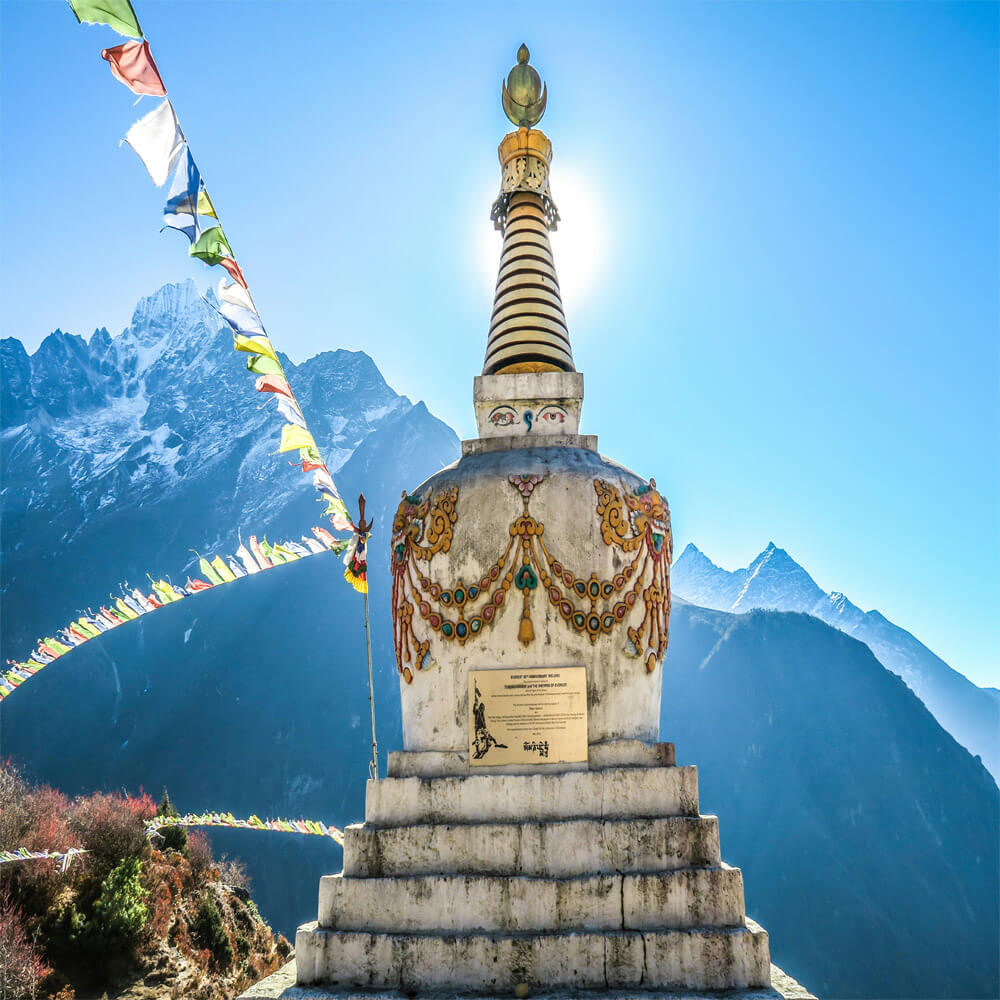
While some trekkers are more interested in photography, others are more interested in physical challenge or cultural immersion. Setting goals aids in organizing the pace, break periods, and destination stops. It is possible to tailor the selection of the ideal time of year, the quality of the lodging, and the assistance of the guide to individual interests.
Understanding these factors ensures a safe, enjoyable, and memorable trek. For those interested in trekking in Nepal, careful planning helps balance adventure, comfort, and stunning Himalayan experiences.
Tips for Choosing the Best Season for Everest View Trek
Think About Weather and Comfort
The weather is the first consideration while organizing the Everest View Trek. Clear mountain views and secure walking paths are the results of favorable weather. The most enjoyable seasons are spring and fall because of the pleasant weather and clear skies. While the monsoon season brings rain and clouds that obscure the summits, winter is calmer and colder. The walk is more pleasurable if you select a season that corresponds with your comfort level.
Match the Season to Your Travel Style
Each trekker has a distinct flair. While some individuals like tranquil roads, others prefer bustling trails with lots of other trekkers. Due to popularity, paths and teahouses may feel crowded in the spring and fall. This could be advantageous if you like interacting with others. If you are a loner, winter is ideal, but be prepared for the cold. You can make informed decisions if you know what kind of trekking atmosphere you like.
Consider Festival Seasons in Nepal
Another unique piece of advice is to look at Nepal's festival schedule. Major festivals like Dashain and Tihar take place in the fall, bringing culture and festivity to the villages along the road. Attending a festival offers you an exclusive glimpse into local culture, which may be equally as fulfilling as climbing Everest. Autumn might be the best option if you value cultural experiences.
Prepare for Altitude and Health
You need to be ready for altitude regardless of the season. Although you still reach over 3,800 meters at Tengboche, the Everest View Trek is not as high as Everest Base Camp. Mountain Trekking in Nepal can be challenging in the winter when it is cold or during the monsoon when it rains suddenly. Make sure you pack appropriately, stay hydrated, and give yourself enough time to adjust. This will help you stay healthy throughout the year.
Think About Flight Reliability
The majority of Everest treks start with a flight to Lukla. Flights are significantly impacted by weather. Flights are more dependable in the spring and fall, but delays and cancellations are prevalent during the monsoon. It is preferable to schedule your trek around times when airline delays are less frequent if you are short on time.
Pack According to the Season
It is critical to pack appropriately for the season. Light clothing with a few layers of warmth is ideal in the spring. Warm jackets are necessary for chilly nights in the fall. Gloves, thermal clothing, and heavy down coats are essential for winter trekkers. Waterproof clothes and bag coverings are essential during the monsoon season. Proper packing guarantees a comfortable and enjoyable trek.
Balance Your Budget
Lastly, consider the impact of the season on expenses. Due to increased demand, teahouses and flights may cost extra during busy times like spring and fall. You may receive savings throughout the monsoon and winter seasons. You may choose the best time to go by balancing your vacation objectives and money.
Conclusion: Everest view trek
What you want to experience will determine the best time of year to go on an Everest View Trek. The best seasons for most trekkers are spring (March–May) and autumn (September–November). Clear skies, steady weather, and stunning views of Mount Everest and the neighboring peaks are all available throughout these months. Rhododendrons bloom in the spring, and fall offers clear mountain air and excellent photographic clarity. Although there are fewer trekkers during the quieter winter (December-February), the snow and cold can make the routes difficult to navigate. Although the monsoon (June–August) brings with it an abundance of foliage, views of the mountains are limited by heavy rain and low visibility.
You may arrange your trek with our company, Nepal Trekking Routes according to your comfort level, desired season, and level of fitness. Whether you choose brilliant spring or crystal-clear autumn, selecting the proper season ensures a safe, fun, and unforgettable Everest View Trek, with each route giving its unique beauty and charm.
Frequently Asked Question
What is the best season for the Everest View Trek?
The best seasons are spring (March to May) and autumn (September to November). These months provide clear skies, mild temperatures, and excellent visibility of Everest and surrounding peaks, making trekking more enjoyable.
Can I do the Everest View Trek in winter?
Yes, you can trek in winter (December to February), but be prepared for very cold weather and possible snowfall. The trails are quieter, which many trekkers enjoy, but warm clothing and preparation are essential.
Is it safe to trek during the monsoon?
The monsoon (June to August) brings heavy rainfall, slippery trails, and poor mountain visibility. While it is possible, it’s not the best time. Only recommended for those who enjoy solitude and lush green landscapes.
What are the advantages of trekking in spring?
Spring offers pleasant weather, colorful rhododendron forests, and clear mornings. The views of Everest and other peaks are spectacular, and the vibrant natural beauty makes it one of the most popular times.
Why is autumn so popular for the Everest View Trek?
Autumn is known for stable weather, cool temperatures, and clear skies. It’s the best season for photography and panoramic mountain views. However, because of its popularity, trails and lodges can be busier compared to other times.





